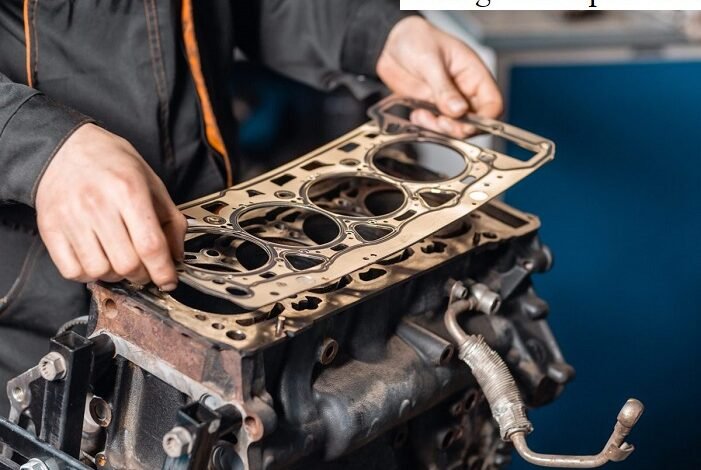Head Gasket Repair Cost: How Much Will It Really Cost You?

If you’re reading this, you probably know how frustrating a head gasket problem can be. I’ve been there, and trust me, the moment you hear “blown head gasket,” your heart sinks, knowing the costs won’t be light.
But don’t panic just yet—let me walk you through what to expect with head gasket repair costs, so you’re not caught off guard.
What Exactly Does a Head Gasket Do?
First things first, let’s talk about why the head gasket is so important. The head gasket sits between your car’s engine block and cylinder head.
It seals the engine’s combustion chambers, keeping the coolant and oil separate while making sure your engine runs smoothly. So, when this little component fails, it’s a big deal.
Average Head Gasket Repair Cost: What Are We Looking At?
Here’s the part that can hurt your wallet. The cost to repair or replace a head gasket ranges from $1,000 to $3,000. I know, it’s a wide range, but several factors can push the cost up or down.
- Vehicle Make and Model: Some cars have easier-to-access engine parts, making labor cheaper. Others? Not so much.
- Labor Rates: Since this is a labor-intensive repair, your location and the shop’s hourly rates matter a lot. I’ve seen labor alone cost $900 to $1,500.
- Extent of Damage: If the blown gasket caused damage to the engine block or cylinder head, expect to pay even more for extra repairs.
Why Is Head Gasket Repair So Expensive?
When I first saw the quote for a head gasket replacement, I had sticker shock. But here’s why the cost is so high—it’s not the part itself that’s expensive.
In fact, the gasket itself can be as cheap as $50 to $200. The real cost comes from the labor involved. Fixing a head gasket means the mechanic has to take apart a significant portion of your engine, which takes hours (sometimes even days) to do.
Can You Drive With a Blown Head Gasket?
Short answer: No. Long answer: Definitely not if you want to avoid further damage. Continuing to drive with a blown head gasket can lead to overheating, engine failure, and more expensive repairs down the road.
I’ve made this mistake before, thinking I could push through a couple more miles—it only made things worse. Learn from me: don’t risk it.
Should You Fix the Head Gasket or Replace the Car?
This is the million-dollar question (okay, more like a few thousand dollars). If your car is older or already giving you trouble, it might not be worth shelling out $2,000 or more to fix the head gasket.
I had to make this call myself, and my advice is to weigh how much you love your car versus how much life it realistically has left. If it’s in otherwise good condition, fixing it can give you many more miles.
DIY Head Gasket Repair: Is It Even Possible?
I’ll be honest: fixing a head gasket is not a DIY job for most people. Sure, you’ll find plenty of YouTube tutorials that make it look easy, but unless you’re a pro mechanic, I wouldn’t recommend it.
It’s a complex repair that involves disassembling the engine, which leaves very little room for mistakes. One wrong move, and you’re looking at even bigger repair costs. In my opinion, it’s best to leave this one to the professionals.
How to Avoid a Blown Head Gasket in the Future
Once you’ve gone through the stress (and cost) of repairing a blown head gasket, you’ll want to avoid ever dealing with it again. From my experience, here are a few tips to keep your engine in good shape and avoid a repeat:
- Check Coolant Levels Regularly: Keeping your engine cool is key. If the coolant is low, it can lead to overheating and cause the gasket to fail.
- Keep an Eye on the Temperature Gauge: If you notice your car running hot, pull over and get it checked. Trust me, ignoring overheating signs can lead to a blown gasket quicker than you think.
- Service Your Car on Time: Regular maintenance goes a long way. I learned this the hard way, so don’t skip oil changes or engine checks.
Read More:
“The ‘Three Times the Rent’ Law: How It Can Make or Break Your Apartment Search”
Final Thoughts
When it comes to head gasket repair, you’re looking at a hefty bill, no matter what. But from my experience, it’s worth the investment if your car is still in good condition. If your car is older, though, and showing other signs of wear, it might be time to consider moving on and looking for a new vehicle.
At the end of the day, dealing with a blown head gasket is never fun, but knowing what to expect and understanding the costs can help make the decision easier. Be prepared, get quotes, and weigh your options—your car and your wallet will thank you!





